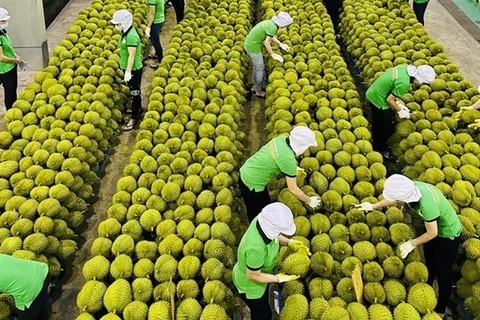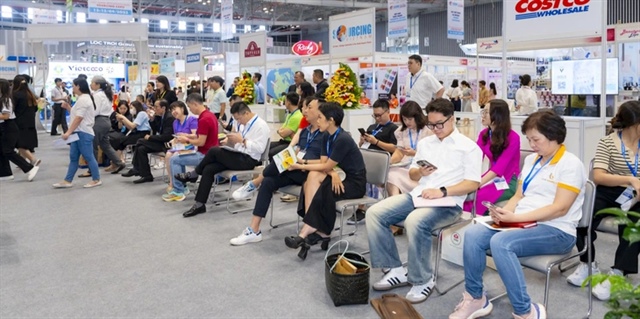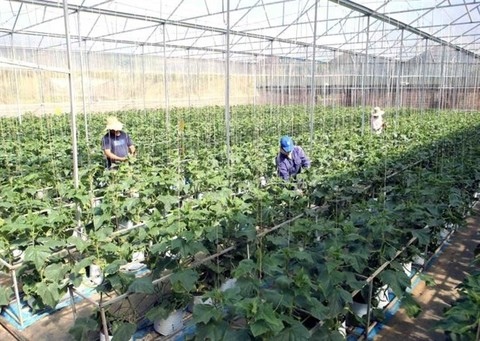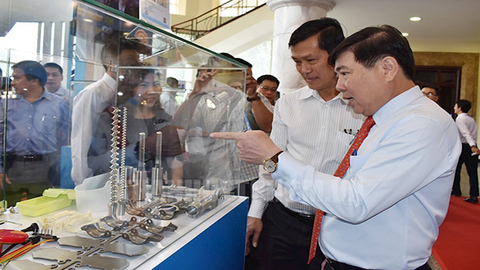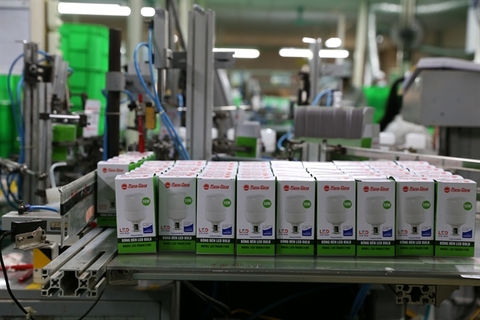Potential risks for exports to U.S.
Potential risks for exports to U.S.
Vietnam’s exports to the United States have recently soared, bringing about opportunities to both gain more market shares in the states and potential risks.
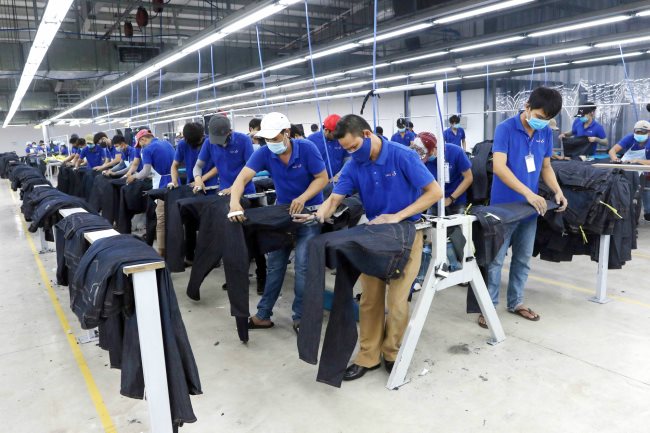
Under the impact of the U.S.-China trade war, Chinese goods are subject to high U.S. tariffs, leaving room for enterprises from other countries, including Vietnam, to penetrate the U.S. market. At present, Chinese leather products, shoes and handbags are not yet put in the group of commodities subject to a 25% U.S. tariff. However, Diep Thanh Kiet, vice chairman of the Vietnam Leather, Shoe and Handbag Association (Lefaso), said many big international footwear companies have contacted Lefaso members for a shift of U.S.-bound orders from China. Vietnam currently exports US$4 billion worth of footwear to the U.S. after China, with some US$15 billion.
The woodwork industry, which generates export revenue of more than US$8 billion for Vietnam, has also experienced visible growth in exports to the U.S. The latest report by Forest Trends shows that woodwork exports to the U.S. have increased strongly, especially since mid-2018 when the U.S.-China trade tension flared up.
Last year, Vietnam’s woodwork exports to the U.S. reached US$3.6 billion, up nearly 30% from 2017. In the first four months of this year, the figure is nearly US$1.4 billion, 1.4 times higher than the year-earlier period. To Xuan Phuc, an analyst from Forest Trends, has forecast that if this growth momentum continues, Vietnam will become the seventh largest woodwork exporter to the states this year, rising from its current 12th position.
The footwear and woodwork are two of the many industries of Vietnam which can have an opportunity to penetrate further into the U.S. market. According to the calculation by Associate Professor and Dr. To Trung Thanh from the National Economics University, the goods overlapping (the similarity in the export structures of countries) of Vietnam and China in the U.S. grew fast in the period 2010-2018. The overall overlapping index increased from 14.51 in 2000-2002 to 42.02 in 2010-2018. The indexes for manufactured and processed exports in the respective periods are 19.25 and 40.43.
A report by the General Statistics Office shows that the U.S. is the largest market for Vietnam’s exports in the first five months of this year, generating an export revenue of US$22.6 billion, up 28% year-on-year. Some exports with the highest growth are smart phones and parts, with 109.2%; electronics, computers and parts 58.4%; and textiles and garments 9.8%.
Exports from Vietnam to the states have increased rapidly since 2010. The total exports in 2018 reached US$47.53 billion, more than triple the figure in 2010 (US$14 billion).
Potential risks
Kiet said the shift of orders from China to Vietnam would help the footwear industry select appropriate products and improve the quality of local production. However, the production capacity of Vietnamese footwear enterprises is small, equivalent only to the same of Guangdong Province in China; so it’s difficult to receive a wave of orders from U.S. customers. He cautioned against a bad scenario where Chinese enterprises will set up factories in Vietnam and compete directly with local businesses in labor and land, thus causing disadvantages for their local counterparts.
Apart from direct competition with local enterprises, the fresh investment from China may put Vietnam into the radar of the U.S. administration.
Assoc. Prof. To Trung Thanh noted that Vietnam’s exports to the U.S. would face three major risks.
The first risk is the origin of goods.
The second risk is the unpredictable policies and protection measures of the Trump administration, which will increase risks for Vietnamese exports to the U.S. The U.S. administration has set many strict regulations for imports. Besides general regulations, each state has its own rule for goods standards.
The third risk is the fall in external demand as an indirect impact from the trade war. With the instability in the global investment and trade trends, the production chains may be affected, and even be disrupted in the phases in Vietnam.
Phuc said to avoid risks, enterprises should be transparent in their production and trading activities, especially with the input materials, as well as ensure sufficient conditions for the origin of exports to the U.S. and evidences for the goods origin in case of inspection.
In addition, enterprises should develop product quality assurance systems like the food safety system to cope with rising non-tariff barriers. For the U.S. market, they should study carefully business information, regulations and practices as well as trade partners before embarking on export activities. Most importantly, it’s necessary to diversify the export markets to better withstand unpredictable risks from the U.S.-China trade war.



